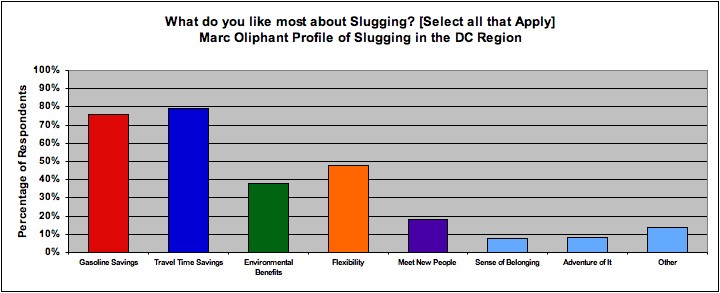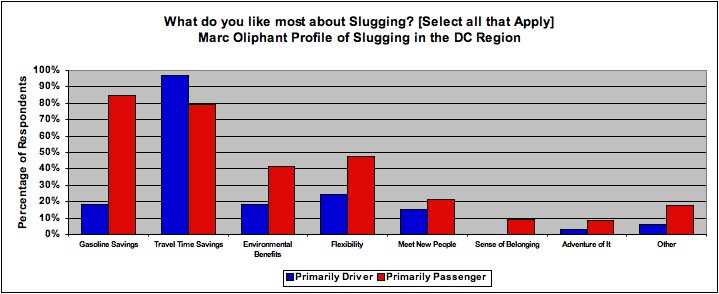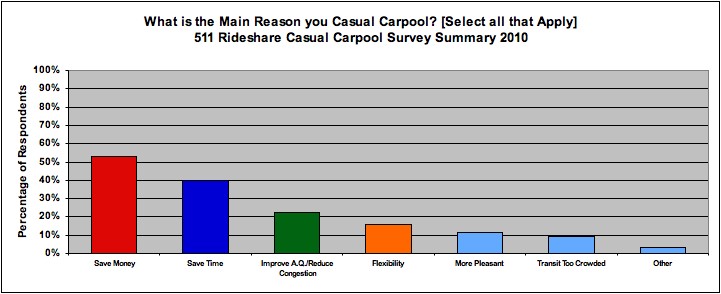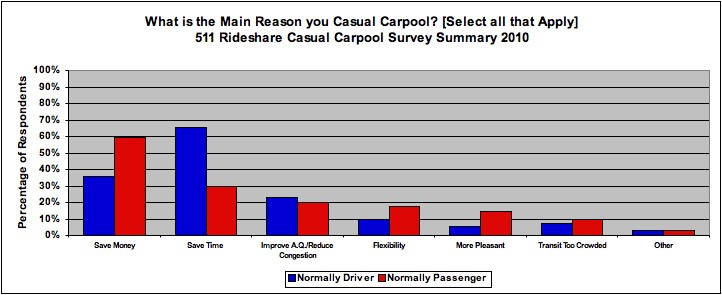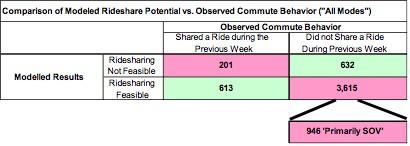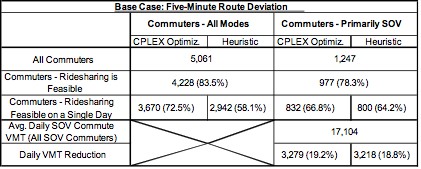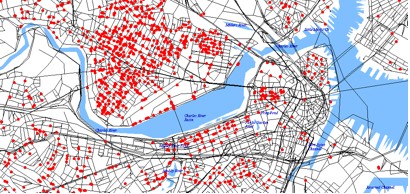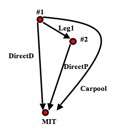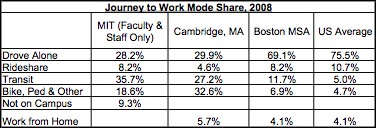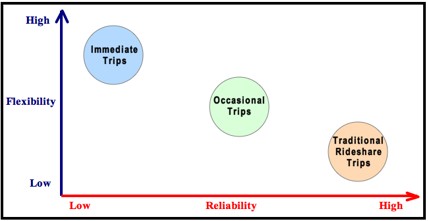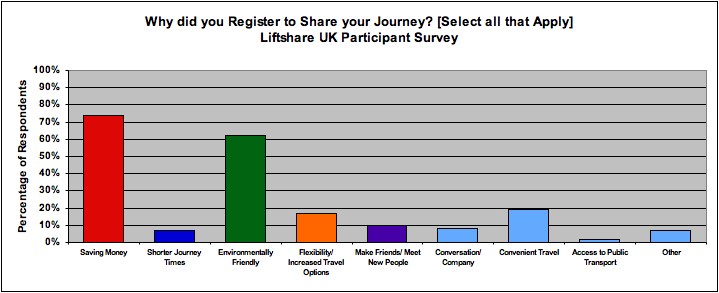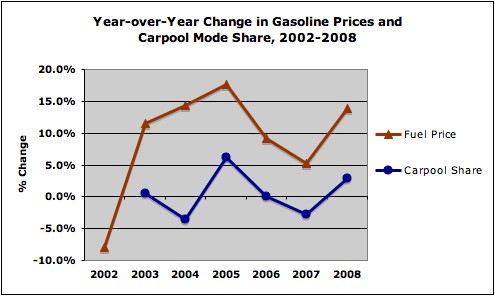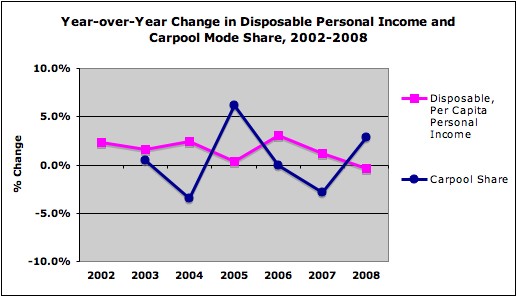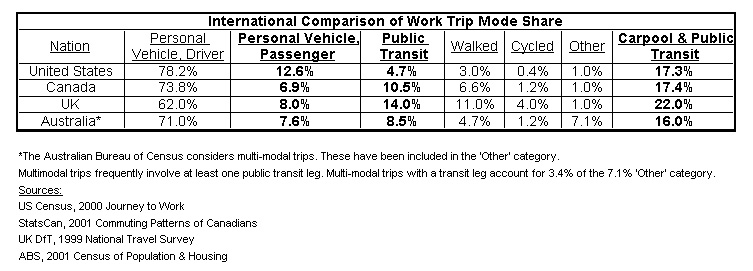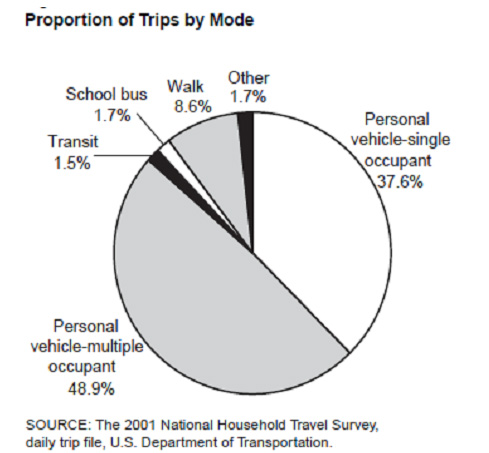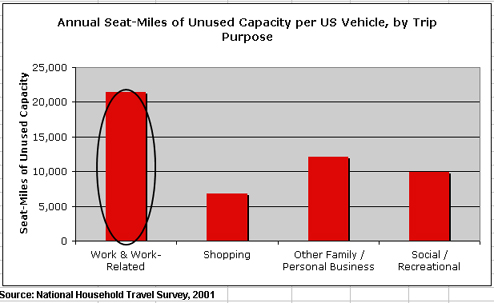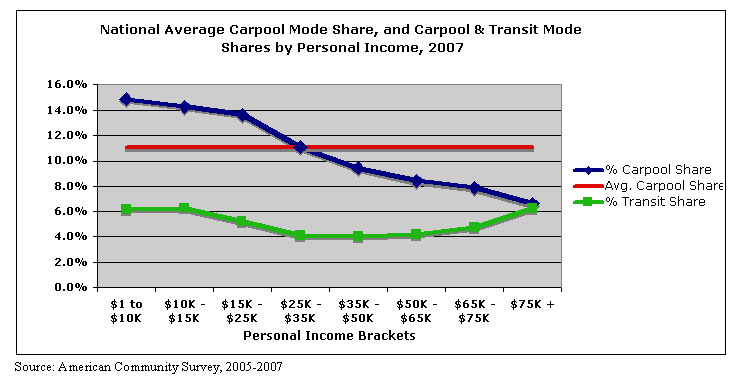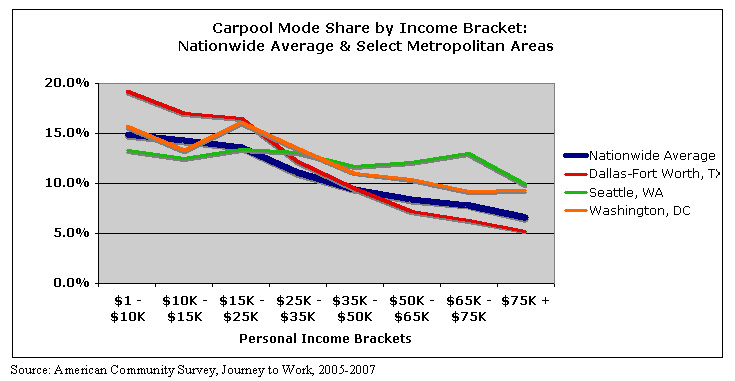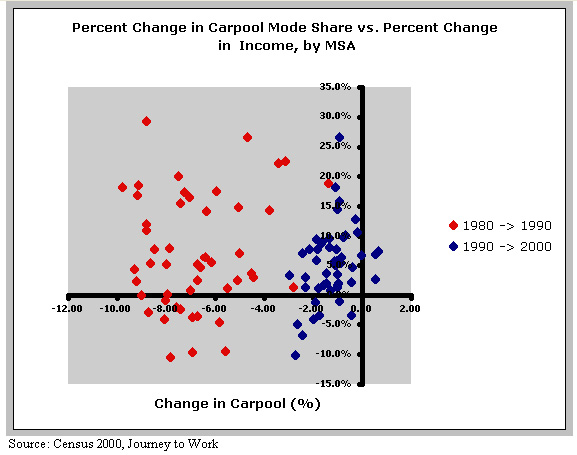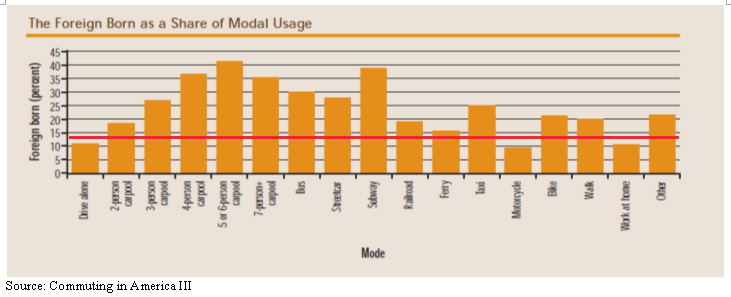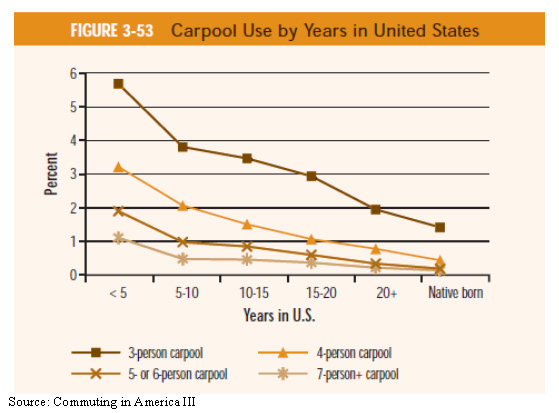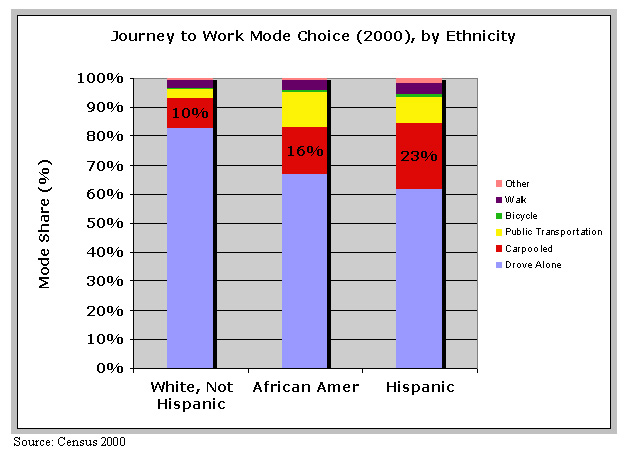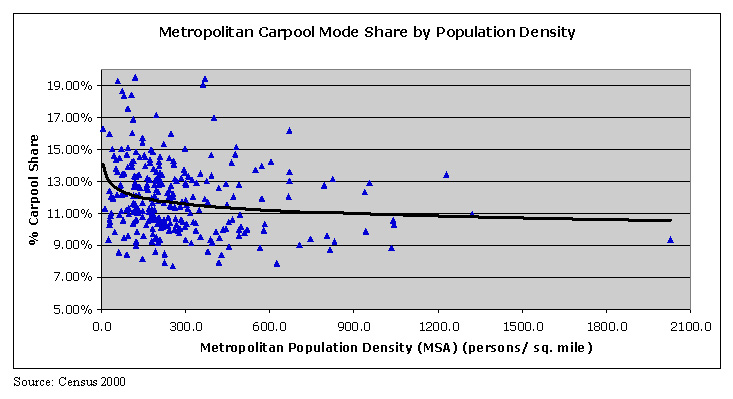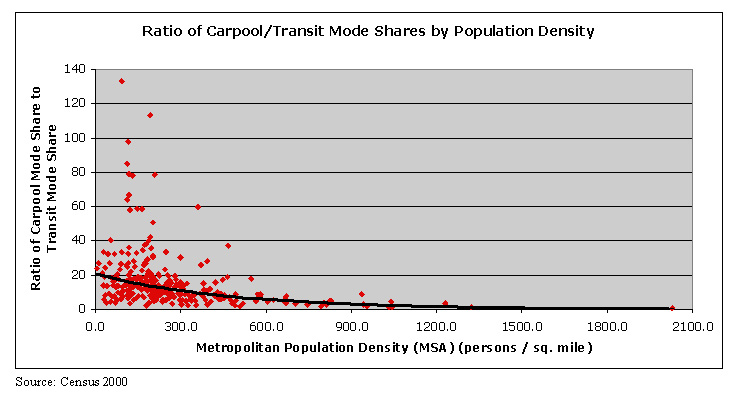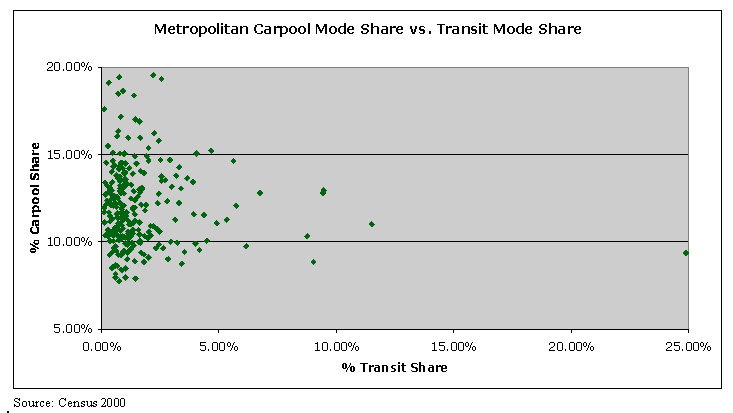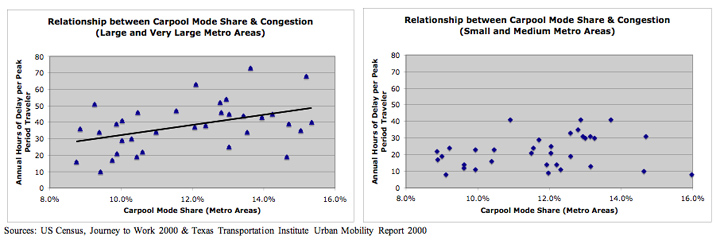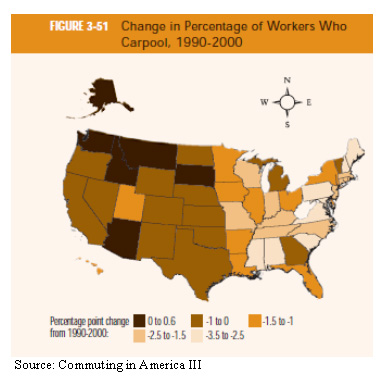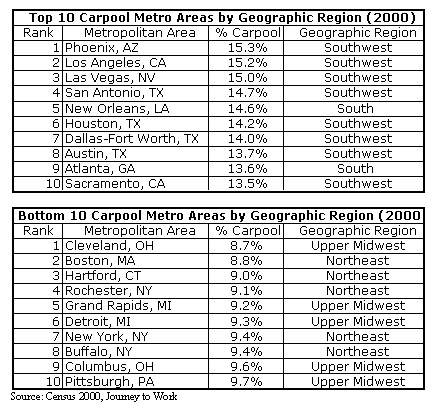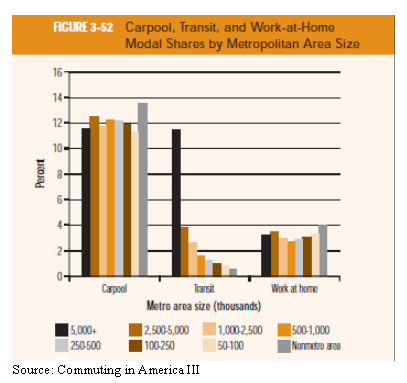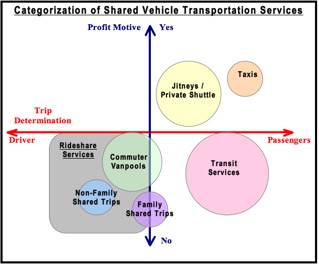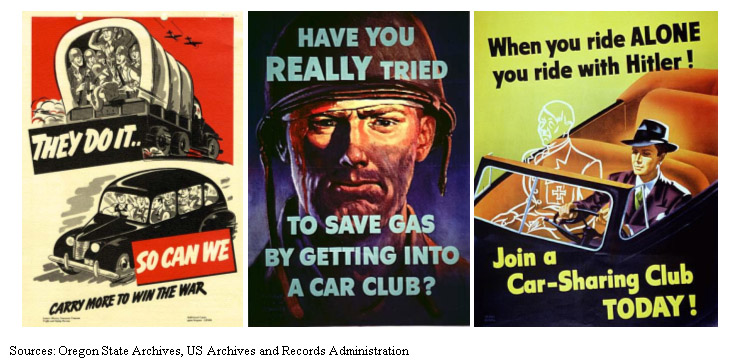Name of Service Provider;Address;E-mail;Phone;Contact Person;Web Link;Summary Sheet;Type of Organization;Geographic Coverage;Geographic Market – City;Geographic Market – State;Carpools Vanpools Both?;Level of Participation;Type of Rideshare Trip;Source of Funding;Trip Cost;Communication Mediums Used;Rider Matching Technology;Route Matching Technology;Employer Connection;Vehicle Ownership /Fleet Size;Incentives;Agreements / Collaborations with Other Rideshare Providers;Integration with Other Commute Information Sources;Additional Information
511.org Rideshare;101 Eighth St Oakland CA 94607;;510-817-5700;;”
Website“;”
Summary Sheet“;Local/Regional Agency;Local/Regional;San Francisco;CA;Both;;Commuting Trips;;Monthly Fee (Vanpools);Website;Automated Matching: Pre-Planned Trips;Origin/Destination;Consultations Marketing and outreach Worksite events Employee surveys;Vans can be leased from third party;Earn money for a commute diary;;;
ABC TMA RideMatch;33 Broad St Suite 300 Boston MA 02109;;617-502-6246;;”
Website“;”
Summary Sheet“;Local/Regional Agency;Local/Regional;Boston;MA;Both;;Commuting Trips;;;Website;Automated Matching: Pre-Planned Trips;Along the Route;28 Employers;;Cash prizes Guaranteed Ride Home;Vanpools found through GoLoco;Website links to Massachusetts Bay Transit Authority AAA and the Executive Office of Transportation;Collaboration with MassRides
AdVANtage Vanpool Program;1350 East 17th St Kansas City MO 64108;”
dbrown@kcata.org“;816-346-0800;;”
Website“;”
Summary Sheet“;Local/Regional Agency;Local/Regional;Kansas City;MO;Vanpools;;Commuting Trips;;Monthly Fee;Mail / E-Mail;Automated Matching: Pre-Planned Trips;Origin/Destination;;Owns Vans;Guaranteed Ride Home;;Run by Kansas City Area Transportation Authority which also runs bus and light rail in the area;
AlterNet Rides;;”
alternetways@alternetrides.com“;925-952-4519;;”
Website“;”
Summary Sheet“;Private;National;;;Both;1693 public rides listed;All Trips;Other – fee from organizations;;Website;Notice Board;;Provides ridematching services to employers;;;;;Provides free service to churches and other places of worship
Avego (by Mapflow);1 Kinsale Commercial Park Kinsale County Cork Ireland;”
info@avego.com“;+353 (0) 21 477 3833;Sean OSullivan;”
Website“;”
Summary Sheet“;Private;International;;;Carpools;Several Thousand Downloads;All Trips;Commission;Cost per Mile;iPhone / Website;Automated Matching: Real-Time;Along the Route;Versions of the Avego software offered on Windows Mobile and Linux platforms for corporate clients;;;;Currently working on a combined transit/rideshare information service in Madrid Spain;
Bay Area Commuter Services;1408 N Westshore Blvd Suite 704 Tampa FL 33607;”
TampaBayRideshare@atlantic.net“;813-282-8200;;”
Website“;”
Summary Sheet“;Non-Profit;Local/Regional;;FL;Both;;Commuting Trips;;;Mail / E-Mail;Automated Matching: Pre-Planned Trips;Origin/Destination;Employer Commute Assistance: zip code maps of where employees live dedicated parking for carpool/vanpool install bike racks;;Emergency Ride Home;;Links to all area transit;Run by Bay Area Commuter Services which is one of nine Florida commuter assistance programs. Funded by FL DOT
Capitol Rideshare;100 North 15th Avenue Suite 431 Phoenix AZ 85007;”
adrides@azdoa.gov“;602-542-7433;;”
Website“;”
Summary Sheet“;State Agency;State;;AZ;Both;;Commuting Trips;;Monthly Fee (Vanpools);Website;Automated Matching: Pre-Planned Trips;Along the Route;State Employees Only;;Carpool Parking Permits Emergency Ride Home Discounts;;;Program is specifically for Arizona State Employees
Carpool.ca;;”
information@carpool.ca“;;Anne Marie Thorton;”
Website“;”
Summary Sheet“;Private;National;;;Carpools;;Commuting Trips;Funded by numerous city governments;;Website;;;Manages over 120 employer rideshare programs;;”Sponsors annual “”Rideshare Week”" which includes prize drawings for new registrants”;;;
Carpool Connect;;;;;”
Website“;”
Summary Sheet“;;National;;;Carpools;;All Trips;;;Website;Automated Matching: Pre-Planned Trips and Notice Board;Origin/Destination;;;;;;
Carpool Crew;;”
contact@carpoolcrew.com“;;;”
Website“;”
Summary Sheet“;;National;;;Carpools;;Commuting Trips;;;Website;Automated Matching: Pre-Planned Trips;Origin/Destination;Employers can advertise Carpool Crew on their website;;;;;Users can leave feedback on travel partners
Carpool Match NW;;”
feedback@carpoolmatchnw.org“;;;”
Website“;”
Summary Sheet“;State Agency;Local/Regional;;OR WA;Carpools;11 500 registered users;All Trips;;;Website;Automated Matching: Pre-Planned Trips;Origin/Destination;Provides Promotional Brochures for paychecks ads and posters;;Prize sweepstakes;Link to MidValley Rideshare;Links to TriMet C-Tran SMART Transit Sandy Transit Salem Area Mass Transit District Flexcar Bicycle Transportation Alliance Willamette Pedestrian Coalition Vancouver Bicycle Club;Sponsored by Metro in cooperation with City of Portland Office of Transportation South Metro Area Rapid Transit TriMet and Rogue Valley Transit District
Carpool World;;;;Max Fox and Isabelle Boulard;”
Website“;”
Summary Sheet“;Private;International;;;Carpools;82 378 registered trips;All Trips;Advertising and Other (fees from organizations);;Website;Automated Matching: Pre-Planned Trips;Along the Route;Employers can form private groups;;;;;Carpool world has a patent on their matching algorithm
Carticipate;3720 Scott Street San Francisco CA 94301;”
contact@carticipate.com“;415-912-1221;Steffen Frost;”
Website“;”
Summary Sheet“;Private;International;;;Carpools;15 000 downloads;All Trips;Other – Revenue from other iPhone Apps;;iPhone / Website;Automated Matching: Real-Time;Origin/Destination;;;;;;
Commuter Connections;777 North Capitol Street NE Suite 300 Washington DC 20002;;1-800-745-RIDE;Nick Ramfos;”
Website“;”
Summary Sheet“;Local/Regional Agency;Local/Regional;;Washington DC MD VA;Both;20 000 riders;All Trips;;;Website;Automated Matching: Pre-Planned Trips and Notice Board;Origin/Destination;Employer Services Representatives;;Guaranteed Ride Home;Links to all area ridesharing/vanpooling programs;Suggests offering subsidized SmarTrip cards (transit passes);Run by a network of over 30 organizations (federal regional state)
Commuter Link;;”
info@commuterlink.com“;1-866-NYCOMMUTE;;”
Website“;”
Summary Sheet“;State Agency;Local/Regional;New York City;NY;Both;;Commuting Trips;;Monthly Fee (Vanpools);Website;Automated Matching: Pre-Planned Trips;Origin/Destination;Specific website for employers – http://employers.commuterlink.com;;Guaranteed Ride Home;;CommuterLink will provide customized transit routes complete with schedules and maps;Non-Profit funded by New York State DOT and supported by NYC Department of Transportation
Commuter Resource RI Rideshare;265 Melrose St Providence RI 02907;;401-781-9400;;”
Website“;”
Summary Sheet“;State Agency;State;;RI;Carpools;;All Trips;;;Website;Notice Board;;;;Guaranteed Ride Home;Powered by Alternet Rides;Run by Rhode Island Public Transit Authority;
CommuteSmart;1731 First Avenue North Suite 200 Birmingham AL 35203;”
ssaffle@rpcgb.org“;1-87-RIDEMATCH;Sean Saffle;”
Website“;”
Summary Sheet“;Local/Regional Agency;Local/Regional;;AL;Both;;Commuting Trips;;Monthly Fee (Vanpools);Website;Automated Matching: Pre-Planned Trips;Origin/Destination;”"”Employer Link”" Provided”;;Cash and Gift Card Rewards;;;CommuteSmart operates statewide but directed by Regional Authorities
Compartir S.L. ;C/ Gavatxons 3 – 2 08221 Terrassa;”
control@compartir.org“;34-937-891-106;;”
Website“;”
Summary Sheet“;;International;;;Carpools;;All Trips;;;Website;Automated Matching: Pre-Planned Trips;Along the Route;;;;;;
Covoiturage;;”
thomas.herlin@covoiturage.com“;33(0)6 62 31 25 88;Thomas Herlin;”
Website“;”
Summary Sheet“;Private;International;;;Carpools;219 940 registered users;All trips;Advertising and Other (fees from organizations);;Website;Notice Board;;Organizations can pay a fee for a Covoiturage-run ridesharing application on their website;;;;;
DriJo GmbH;Mountain View CA and Lenzau 1 84558 Kirchweidach Germany;;1-650-276-0383 498623-218330;Walter Demmelhuber and Peter Sabalat;”
Website“;”
Summary Sheet“;;International;;;Carpools;;All Trips;;Other – Auction;Website;Notice Board;Along the Route;;;;;;
Drive2Day;;;;;”
Website“;”
Summary Sheet“;;International;;;Carpools;;Inter-City Trips;;;Website;Automated Matching: Pre-Planned Trips;Along the Route;Module and Program Available to Employers;;;;;Users can leave feedback on travel partners
Drive Time Des Moines;;”
info@drivetimedesmoines.org“;515-286-4969;;”
Website“;”
Summary Sheet“;Local/Regional Agency;Local/Regional;Des Moines;IA;Both;;Commuting Trips;;;Mail / E-Mail;Automated Matching: Pre-Planned Trips;Origin/Destination;;;Rest Your Car – monthly and quarterly prize drawings;;Links to all area transit;Funded by Des Moines Area MPO Downtown Community Alliance City of Des Moines and Des Moines Regional Transit Authority
Easy Street;100 Corporate Drive Suite 120 Windsor CT 06095;”
CS@rideshare.com“;1-800-972-3279;;”
Website“;”
Summary Sheet“;Non-Profit;State;;CT;Vanpools;300 daily routes with 3000 daily riders;Commuting Trips;;Monthly Fee;Website;Notice Board;;;Owns Vans;Cash rewards for referring new riders Emergency Ride Home;Run by The Rideshare Company;;Sponsored by Connecticut DOT
Ecolane Dynamic Carpool;Mets‰nneidonkuja 10 2130 Espoo Finland;”
sami.poykko@ecolane.com “;+358 9 72 554 272;Sami Poykko;”
Website“;”
Summary Sheet“;Private;International;;;Carpools;;All Trips;;;Java-enabled Mobile Phones;;;Appears to be marketed to employers & public agencies;;;;;
eRideshare;PO Box 402 Edwardsville IL 62025;”
info@erideshare.com“;618-530-4842;;”
Website“;”
Summary Sheet“;Private;International;;;Carpools;20409 daily carpools 967 cross country trips 151 other trips;All Trips;;;Website;Notice Board;;Employers can make their own carpooling group;;;;;
Freewheelers Ltd;;”
web.info@freewhelers.co.uk“;;Daniel Harris;”
Website“;”
Summary Sheet“;Non-Profit;International;;;Carpools;316 rider requests 103 driver requests;All Trips;Other – Donations;;Website;Notice Board;;;;;;;
GishiGo Ride Share Network;;;San Francisco: 415-223-4243 New York: 718-690-7290;;”
Website“;”
Summary Sheet“;Private;International;;;Carpools;;Non-Work Trips;Commission;;Website;Notice Board;;;;;;;Users can leave feedback on travel partners
Goose Networks;216 1st Ave S Suite 450 Seattle WA 98104;”
zac@goosenetworks.com“;206-57-GOOSE;Zac Corker;”
Website“;”
Summary Sheet“;Private;National;;;Carpools;;Commuting Trips;Commission (per employer);;Website;Automated Matching: Pre-Planned Trips;Along the Route;Works strictly with employers – not with individual commuters;;;;;Provides management tools to employers regarding commute options
GoLoco;40 Cottage St Cambridge MA 02139;”
support@goloco.org“;617-395-2643;Robin Chase;”
Website“;”
Summary Sheet“;Private;National;;;Carpools;15 000 registered;All Trips;Commission;Cost per Mile;Website;Automated Matching: Pre-Planned Trips;Along the Route;Employers can make their own carpooling group and/or provide GoLoco chicklet on their site;;Most employers offer preferred parking;;;Members can select who sees their post Facebook application also available
Go Vermont – Connecting Commuters;;;1-800-685-RIDE;;”
Website“;”
Summary Sheet“;State Agency;State;;VT;Both;4000 registered users;Commuting Trips;;Monthly Fee (Vanpools);Website;Automated Matching: Pre-Planned Trips;;;Vans leased from VPSI;Emergency Ride Home;Vanpools provided by VPSI;;
GreenRide;368 Pleasant View Drive Lancaster NY 14086;”
greenride@ene.com“;1-877-GR-RIDE-1;;”
Website“;”
Summary Sheet“;Private;International;;;Both;;Commuting Trips;;;Website;Automated Matching: Pre-Planned Trips;Along the Route;Used by various employers all over the US Canada and New Zealand;;;;;Ridesharing package that is solicited to MPOs TMAs Corporations Campuses Air Quality Management Districts
Hawaii DOT Rideshare Program;601 Kamokila Boulevard Room 602 Kapolei HI 96707;”
rideshare@hawaii.gov“;808-692-7695;;”
Website“;”
Summary Sheet“;State Agency;State;;HI;Carpools;;Commuting Trips;;;Mail / E-Mail;Automated Matching: Pre-Planned Trips;Origin/Destination;;;;;Links to The Bus (area bus service) and Leeward Oahu TMA (LOTMA);
Hitchhikers.org;;”
info@hitchhikers.org“;;;”
Website“;”
Summary Sheet“;Private;International;;;Carpools;124 Rides listed;Inter-City Trips;Other – Donations;;Website;Notice Board;;;;;;;Capability to be international but only has European trips posted
iCarpool – Interact Soft Inc;;”
support@icarpool.com“;425-369-6136;Amol Brahme;”
Website“;”
Summary Sheet“;Private;International;;;Both;Works with 50 organizations plus individual travelers;All Trips;Advertising and Other (fees from organizations);;Website;Automated Matching: Pre-Planned Trips and Real-Time;;Work with 50 clients from organizations universities and regional/local planning agencies;;Guaranteed Ride Home;;Software can integrate with transit schedules;
Jack Bell Ride-Share for BC;700 West 57th Ave Vancouver BC Canada V6P 1S1;”
info@ride-share.com“;1-888-380-RIDE;;”
Website“;”
Summary Sheet“;Private;Local/Regional;;British Columbia Canada;Both;5 000 registered users;Commuting Trips;;Monthly Fee (formal rideshare);Website;Automated Matching: Pre-Planned Trips;;Can search by employer on the homepage with 58 employers listed;Owns a fleet of cars and vans;;;;Designates trips as Casual and Formal Ridesharing. Casual – use personal vehicle due to irregular work schedule Formal – use Jack Bell owned vehicle
Leeward Oahu TMA Carpool Service;;”
lotma@lava.net“;808-677-RIDE;;”
Website“;”
Summary Sheet“;Local/Regional Agency;Local/Regional;Oahu;HI;Carpools;;Commuting Trips;;;Mail / E-Mail;Automated Matching: Pre-Planned Trips;;;;Emergency Ride Home;Links to DOT website for more carpool information as well as erideshare.com and carpoolworld.com;Links to LOTMA Commuter Express (bus) The Bus and Mililani Trolley Vanpool Hawaii;
Lexington-Fayette Urban County Government Rideshare Program;200 East Main Street Lexington KY 40507;”
rdaman@lfucg.com“;859-233-POOL;;”
Website“;”
Summary Sheet“;Local/Regional Agency;Local/Regional;;KY;Both;;Commuting Trips;;;Mail / E-Mail;Automated Matching: Pre-Planned Trips;;;;Guaranteed Ride Home;;Link to Lextran (transit authority or LFUCG and Lexington KY);Also provide a bicycle program
Liftshare;Butterfly Hall Attleborough Norfolk England NR17 1AB;”
info@liftshare.com“;44(0)8700-780225;Ali Clabburn;”
Website“;”
Summary Sheet“;Private;International;;;Carpools;71 610 235 trips registered for the next 12 months 32% of registered journeys result in matches;All Trips;Other – fee from employers;;Website;Automated Matching: Pre-Planned Trips;Along the Route;Employers can form private groups for their employees see liftsharesolutions.com;;;;liftshare also has WalkBUDi BikeBUDi and TaxiBUDi;
Local Motion Rideshare;301 King Street Room 1200 Alexandria VA 22314;”
localmotion@alexandriava.gov“;703-838-3800;;”
Website“;”
Summary Sheet“;Local/Regional Agency;Local/Regional;;VA;Both;;Commuting Trips;;;Website;Automated Matching: Pre-Planned Trips and Notice Board;Origin/Destination;UrbanTrans Consultants works with City LocalMotion to provide Employer Services;;;Ridematching done by Commuter Connections advertises for NuRide advertises for 5 vanpool agencies in the area;Bus/Rail Bike/Walk trip planning tools are also available on the site;HOV lane locations listed
MassRIDES Ridesharing Database;;”
leeroy.wagner@eot.state.ma.us“;1-888-426-6688;;”
Website“;”
Summary Sheet“;State Agency;State;;MA;Both;15 000 registered users;Commuting Trips;;;Website;Automated Matching: Pre-Planned Trips;Along the Route;Works with various employers around the state;;Prize drawings;;Link to Zipcar;
MetroPool;1 Landmark Square 8th Floor Stamford CT 06901;”
info@metropool.com“;800-346-3743;Mary Chalupsky;”
Website“;”
Summary Sheet“;;Local/Regional;;CT NY;Both;;Commuting Trips;;;Website;Automated Matching: Pre-Planned Trips;;MetroPool provides a variety of management services to employers and works with around 300 organizations;;;Links to NuRide CTRides EasyStreet nyRides Rideworks;Links to Connecticut Rail Commuter Council and all area transit;Metropool operates 5 regional offices
Metro Vanpool;;”
rto@oregonmetro.gov“;503-813-7566;;”
Website“;”
Summary Sheet“;Local/Regional Agency;Local/Regional;Portland;OR;Vanpools;28 routes listed;Commuting Trips;;Monthly Fee;Website;Notice Board;;;Vans leased from a third party;Emergency Ride Home qualified routes get 50% subsidy on monthly lease;Advertised by CarpoolmatchNW;;Vanpools can be started by commuters or their employers
Mid-America Regional Council RideShare Program;600 Broadway Suite 200 Kansas City MO 64105;;816-842-RIDE;;”
Website“;”
Summary Sheet“;Local/Regional Agency;Local/Regional;Kansas City;MO;Carpools;;Commuting Trips;;;Website;Notice Board;;Working with 36 Employers providing Commuter Tracker Calendar Regional employer-based commuter challenge;;Preferred parking subsidized bus passes cash and gift certificate rewards extra time off;Powered by GreenRide Link to AdVANtage Vanpool Program;;
Mid-Missouri RideShare Program;PO Box 176 Jefferson City MO 65102;;573-522-RIDE;;”
Website“;”
Summary Sheet“;State Agency;Local/Regional;Jefferson City Columbia;MO;Carpools;;Commuting Trips;;;Mail / E-Mail;Automated Matching: Pre-Planned Trips;Origin/Destination;;;;Links to all other area rideshare providers;;
My RideSmart ;40 Courtland St NE Atlanta GA 30303;”
RideSmart@AtlantaRegional.com“;1-877-433-3463;;”
Website“;”
Summary Sheet“;Local/Regional Agency;Local/Regional;Atlanta;GA;Both;;Commuting Trips;;Monthly Fee (Vanpools);Mail / E-Mail;Automated Matching: Pre-Planned Trips;Origin/Destination;Employer Service Organizations (ESO);Vans leased from a third party;Guaranteed Ride Home Gift Card drawings;;Links to area transit and a Regional Transit System map available for download;
New Hampshire Rideshare;7 Hazen Drive Concord NH 03301;;603-271-6767;;”
Website“;”
Summary Sheet“;State Agency;State;;NH;Both;;Commuting Trips;;;Mail / E-Mail;Automated Matching: Pre-Planned Trips;;;;;;Links to area transit;Run by NH DOT Park and Ride map provided
New Jersey Ridesharing;PO Box 600 Trenton NJ 08625;;;;”
Website“;”
Summary Sheet“;State Agency;State;;NJ;Both;;Commuting Trips;;Monthly Fee (Vanpools);Mail / E-Mail;Automated Matching: Pre-Planned Trips;;;Vans can be leased from third party;Carpooling Makes Sense – receive gas cards for carpool log;;;Run by NJ DOT Park and Ride map provided
NuRide;35 Pratt St Suite 108 Essex CT 06426;”
http://www.nuride.com/contact“;1-866-NURIDE-1;Rick Steele;”
Website“;”
Summary Sheet“;Private;Local/Regional;Minneapolis/St. Paul New York City Hampton Roads San Antonio and Houston Washington DC;MN NY CT VA TX Washington DC;Carpools;36 457 Registered users 1 582 923 shared rides;All Trips;Other – Sponsors and government contracts;;Website;Automated Matching: Pre-Planned Trips;Origin/Destination;Can only use service with a verified organization e-mail address;;Reward points earned for each trip which can be redeemed for prizes;;;
Ohio RideShare;;;1-800-825-RIDE;;”
Website“;”
Summary Sheet“;Local/Regional Agency;Local/Regional;;OH;Carpools;;Commuting Trips;;;Website;Automated Matching: Pre-Planned Trips;Along the Route;;;;Powered by GreenRide;Link to Ohio Bike Buddies;Run by Akron Metropolitan Area Transportation Study Eastgate Regional Council of Governments and Northeast Ohio Areawide Coordinating Agency (all MPOs)
Ozarks Commute;;;831-RIDE;;”
Website“;”
Summary Sheet“;Local/Regional Agency;Local/Regional;;MO;Both;;Commuting Trips;;;Website;Automated Matching: Pre-Planned Trips;Along the Route;Can search for matches based on your employer;;;System is powered by RideShark;;Publicly funded
Pace RideShare;550 W Algonquin Rd Arlington Heights IL 60005;”
passenger.services@pacebus.com“;847-364-PACE;;”
Website“;”
Summary Sheet“;Local/Regional Agency;Local/Regional;;IL;Both;;Commuting Trips;;Monthly Fee (Vanpools);Website;Automated Matching: Pre-Planned Trips;Along the Route;Employers can establish a PaceRideShare Employee Administrator who has access to a list of participating employees can create reports of travel modes trip and pollution reductions fuel and cost savings;Owns vans;For Vanpooler – Emergency Ride Home bus passes if using the bus to get to vanpool;;Run by Pace Bus Service;
Palouse Rideshare;PO Box 8596 Moscow ID 83843;”
info@palouserideshare.org“;208-882-1444;;”
Website“;”
Summary Sheet“;Local/Regional Agency;Local/Regional;Palouse;ID;Carpools;;Commuting Trips;;;Website;Automated Matching: Pre-Planned Trips;Origin/Destination;;;;Works closely with PCEI Vanpool Network;;System is still in testing stage
Palouse – Clearwater Environmental Institute Vanpool Network;PO Box 8596 Moscow ID 83843;”
info@pcei.org“;208-882-1444;;”
Website“;”
Summary Sheet“;Non-Profit;Local/Regional;Moscow Lewiston Orofino;ID;Vanpools;;Commuting Trips;;Monthly Fee;Mail / E-Mail;Notice Board;;;Owns vans;;Works with Palouse Rideshare;Links to fixed bus routes in the area;80% of van costs provided under CMAQ in 1994 other 20% came from local supporters
PickUp Pal;Second Floor International Trading Center Warrens St. Michael Barbados West Indies;”
john@pickuppal.com“;;John Stewart;”
Website“;”
Summary Sheet“;Private;International;;;Carpools;;All Trips;Advertising;;Website;Automated Matching: Pre-Planned Trips;;;;;;Links to bus and rail services;Facebook application also available costs of ride are paid between rider and driver in cash users can provide feedback on their travel partners
Piggyback;France;”
info@piggybackmobile.com“;;Sebastien Petit;”
Website“;”
Summary Sheet“;Private;International;;;Carpools;Not yet Available for Download;All Trips;;;Google Android Mobile Phone;;;;;;;;
Pooln Carpool Network;;”
support@pooln.com“;;;”
Website“;”
Summary Sheet“;;National;;;Carpools;;Commuting Trips;;;Website;Automated Matching: Pre-Planned Trips;Origin/Destination;;;;;;Matching is done based on origin and destination zip code
Ride4All;;”
Patrick@ride4all.com“;;Patrick Kelly and Tri Tran;”
Website“;”
Summary Sheet“;Private;National;;;Carpools;;All Trips;;;Website;Automated Matching: Pre-Planned Trips;Origin/Destination;;;;;;
Ride Amigos;;”
customerservice@rideamigos.com“;;;”
Website“;”
Summary Sheet“;Private;Local/Regional;New York City;NY;Carpools;;All Trips;;;Website;Automated Matching: Pre-Planned Trips;Origin/Destination;Employers can create their own private ridesharing system for their employees currently RideAmigos is working with at least 12 employers;;Rewards card to receive discounts at local participating vendors;;;
Ride Arrangers;1290 Broadway Suite 700 Denver CO 80203;”
info@drcog.org“;303-458-POOL;;”
Website“;”
Summary Sheet“;Local/Regional Agency;Local/Regional;Denver;CO;Both;;Commuting Trips;;Monthly Fee (Vanpools);Mail / E-Mail;Automated Matching: Pre-Planned Trips;;Provides complimentary assistance to employers to provide free carpooling service to employees;Owns vans;Guaranteed Ride Home for vanpoolers;;;
RideFinders;1 Transit Way PO Box 7500 Granite City IL 62040;”
ridefinders@mct.org“;618-874-7433;;”
Website“;”
Summary Sheet“;Local/Regional Agency;Local/Regional;St. Louis;MO;Both;;Commuting Trips;;Monthly Fee (Vanpools);Website;Automated Matching: Pre-Planned Trips;Origin/Destination;Works with over 1 400 Employers;Owns vans;Incentives available when employer is registered with RideFinders – Guaranteed Ride Home;;;Operates with grant funding from USDOT and FHWA Park and Ride Map provided
RideLinks;1 S Fair Oaks Ave Suite 302 Pasadena CA 91105;”
info@ridelinks.com“;626-440-9933;;”
Website“;”
Summary Sheet“;Private;National;;;Carpools;;Commuting Trips;Other – fee from employers;;Website;Automated Matching: Pre-Planned Trips;Origin/Destination;Employers can create their own private ridesharing system for their employees and employees of neighboring businesses;;;;;Ridematching in just one of many air quality services that RideLinks provides
Ridematch.info;;;1-800-COMMUTE;;”
Website“;”
Summary Sheet“;Local/Regional Agency;Local/Regional;;CA;Both;;Commuting Trips;;;Website;Automated Matching: Pre-Planned Trips and Notice Board;Origin/Destination;Offers training to employers employers can offer incentives at no additional cost Employee surveys provided;;Rideshare week – incentives/prizes;Ridematching service for commutersmart.info;;
RidePro;;”
info@trapezegroup.com“;480-627-8400;;”
Website“;”
Summary Sheet“;Private;National;;;Both;;Commuting Trips;Other – fee from employers;;Website;Automated Matching: Pre-Planned Trips;Origin/Destination;The Trapeze Group (creator or RidePro) offers its software strictly to employers and organizations not individual commuters. Employers can manage the software on their own system or run it through a Trapeze-hosted server;;;;RidePro has to capability to provide trip planners which include public transit options for the given area;
Ride Search;1352 Riley Carrollton TX 75007;”
brian@ridesearch.com“;1-800-875-7291;Brian Bass;”
Website“;”
Summary Sheet“;Private;National;;;Carpools;;All Trips;Advertising;;Website;Automated Matching: Pre-Planned Trips and Notice Board;Origin/Destination;RideSearch sells t-shirts business cards and reserved parking signs to promote carpooling;;;;;Notice board for non-work trips and automatic matching for work trips
The RideShare Company;100 Corporate Drive Suite 120 Windsor CT 06095;”
nfitzgerald@rideshare.com“;800-842-2150;Nancy Fitzgerald;”
Website“;”
Summary Sheet“;Non-Profit;Local/Regional;;CT NY MA RI;Both;3000 riders/day;Commuting Trips;;;Mail / E-Mail;Automated Matching: Pre-Planned Trips;;Transportation Fairs Commuter Tax Benefit Program;;;Parent Company of EasyStreet Vanpool link to NuRide MetroPool Ctrides Rideworks ;Links to area transit;Aimed more towards employers than individual commuters
RideShare Delaware;919 N. Market St Suite 411 Wilmington DE 19801;;1-888-RIDE-MATCH;;”
Website“;”
Summary Sheet“;State Agency and Private Organization;;;DE;Both;;Commuting Trips;;Monthly Fee (Vanpools);Mail / E-Mail;Automated Matching: Pre-Planned Trips;Origin/Destination;Employee Surveys Marketing and Outreach Work site events Density Maps Relocation assistance;Vans leased from a third party;Emergency Ride Home Preferred Parking (employer specific);;Links to regional transit agencies;
Rideshare Online;;”
rideshare@rideshareonline.com“;1-888-814-1300 1-208-345-POOL;Cathy Blumenthal;”
Website“;”
Summary Sheet“;Local/Regional Agency;Local/Regional;;WA ID;Both;~15 000 registered users;All Trips;;Monthly Fee (Vanpools);Website;Automated Matching: Pre-Planned Trips;;Many area employers use the services;Vans are owned by individual transit agencies;Contact local county for incentives;Run in cooperation with Washington and Idaho vanpool providers;Run by King County Metro (Transit Authority) in a partnership with 16 transit agencies;List of park and ride lots provided
Rideshare.us;;;;;”
Website“;”
Summary Sheet“;;International;;;Carpools;;All Trips;;;Website;Notice Board;;;;;;;US and Canada
RideShark;2031 Merivale Road Ottawa ON Canada K2G 1G7;”
info@rideshark.com“;613-226-9845;Sharon Lewinson P.Eng. President;”
Website“;;Private;International;Many e.g. Phoenix London Ottawa etc.;Many e.g. Quebec;Both;;All trips;Other – fee from organizations;;Website;Automated Matching: Pre-Planned Trips;Along the Route;Customized services for corporate users campuses etc.;;Prize draws loyalty points;;511 travel information & transit information;
RideSpring;849 Almar Ave Suite C 205 Santa Cruz CA 95060;”
contact@ridespring.com“;831-278-0312;;”
Website“;”
Summary Sheet“;Private;National;;;Carpools;;Commuting Trips;Other – fee from employers;;Website;Automated Matching: Pre-Planned Trips;;Employers can create their own private ridesharing system for their employees;;Software has a built-in incentive program and RideSpring provides monthly prizes;;;
Ridester;8181 Fannin St Suite 1137 Houston TX 77054;;1-800-499-3745;Jake Boshernitzan;”
Website“;”
Summary Sheet“;Private;National;;;Carpools;;Inter-City Trips;Commission;Cost per Trip;Website;Automated Matching: Pre-Planned Trips;Along the Route;;;;;;$2 ticket fee + 9.5% processing fee on drivers asking price all posted trips must be longer than 20 miles
Rideworks;195 Church St New Haven CT 06510;”
info@rideworks.com“;1-800-ALL-RIDE;;”
Website“;”
Summary Sheet“;Non-Profit;;;CT;Both;;Commuting Trips;;;Mail / E-Mail;Automated Matching: Pre-Planned Trips;Origin/Destination;Relocation services Employee Transportation Coordinator training On-site events and presentations Telecommuting consulting Marketing materials Construction announcements Transportation survey assistance Commuter Information Centers;Vans leased from EasyStreet Vanpool;Guaranteed Ride Home;Link to NuRide provided;Links to area transit;
San Luis Obispo Regional Rideshare;1150 Osos St Suite 202 San Luis Obispo CA 93401;”
mmarshall@rideshare.org“;805-541-2277;Morgen Marshall;”
Website“;”
Summary Sheet“;Local/Regional Agency;Local/Regional;San Luis Obispo County;CA;Both;;All Trips;;Monthly Fee (Vanpools);Mail / E-Mail;Automated Matching: Pre-Planned Trips;;Transportation Choices Program;Owns 24 vans;Lucky Bucks Program – Earn bucks and cash them in for prizes Monthly drawings Guaranteed Ride Home;;Google Transit Trip Planner is embedded in the website;
Share-a-Ride;190 N. Independence Mall West 8th Floor Philadelphia PA 19106;”
sharearide@dvrpc.org“;215-592-1800;;”
Website“;”
Summary Sheet“;Local/Regional Agency;Local/Regional;;PA;Both;;Commuting Trips;;;Mail / E-Mail;Automated Matching: Pre-Planned Trips;Origin/Destination;Mobility Alternatives Program;Vans leased from a third party;Emergency Ride Home;;Information about transit incentives (TransitChek);
Share The Ride North Carolina;;;;;”
Website“;”
Summary Sheet“;Local/Regional Agency;Local/Regional;;NC;Both;;Commuting Trips;;Monthly Fee (Vanpools);Mail / E-Mail;Automated Matching: Pre-Planned Trips;Origin/Destination;Must be affiliated with a registered employer to use the service;;Emergency Ride Home when provided by local agency;;Link to NCDOT Public Transit Division and Other are transit and vanpool programs;
The Carpool;PO Box 6 Kelvin Grove 4059 Brisbane Australia;”
info@thecarpool.com.au“;;;”
Website“;”
Summary Sheet“;Private;International;;;Carpools;;All Trips;Other – fee from organizations;;Website;Notice Board;;Employers can create and manage their own private ridesharing internet site – currently there is only one employer site listed on thecarpool.com;;;;;Focused in Australia New Zealand and Singapore
Trip Convergence Ltd Flexible Car Pooling;32 Green Lane East Remuera Auckland 1050 New Zealand;”
paulminett@tripconvergence.co.nz“;+64 9 524 9850 +64 21 289 8444 206-631-9702;Paul Minett;”
Website“;”
Summary Sheet“;Private;International;;;Both;Seeking trial locations;Commuting Trips;Other – awards grants public sources;Cost per Trip;N/A;None – Casual Carpool;None- Casual Carpool;Trip Convergence is directed towards individual users though large employment destinations with single or multiple employers could participate in establishing the system to reduce traffic to their location. ;;It is expected that incentives and prize draws will be offered both to get initial sign-up and on an ongoing basis.;;;
Utah Transit Authority Rideshare;;”
wkarsch@rideuta.com“;;Wendy Karsch;”
Website“;”
Summary Sheet“;State Agency;State;;UT;Both;;Commuting Trips;;;Website;Automated Matching: Pre-Planned Trips;Along the Route;Employers can manage transportation needs through a web-based interface;;Commuter Challenge Incentive Program;;Run by Utah Transit Authority;
Valley Rides;;”
mgarza@fresnocog.org“;559-278-2277 559-233-4148;Frederick Martinez Melissa Garza;”
Website“;”
Summary Sheet“;Local/Regional Agency;;Fresno;CA;Both;;Commuting Trips;;Monthly Fee (Vanpools);Website;Automated Matching: Pre-Planned Trips;Origin/Destination;;Leases Vans;;;Links and numbers for all area transit providers;Partnership between California State University Fresno and Council of Fresno County Governments
Vanpool Hawaii;711 Kapiolani Blvd Suite 985 Honolulu HI 96813;”
jennie.farley@vpsiinc.com“;808-VAN-RIDE;Jennie Farley;”
Website“;”
Summary Sheet“;Private;State;;HI;Vanpools;;Commuting Trips;;Monthly Fee;Website;Notice Board;;Cool Pool – offers companies tax-free benefits conducts employee surveys;Owns vans;;;;Operates under VPSI nations largest vanpool provider
ZimRide;514 Bryant St Suite 119 Palo Alto CA 94301;”
support@zimride.com“;1-866-422-7609;Logan Green;”
Website“;”
Summary Sheet“;Private;International;;;Carpools;300 00 users in the past year;All Trips;Other – fee from organizations;;Website;Automated Matching: Pre-Planned Trips;Along the Route;Provides customized site for organizations and handles all technical operations;;;;;Facebook application also available
Uncategorized | No Comments »
